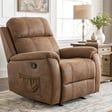Poor posture is a silent epidemic in our increasingly digital world. With many of us hunched over screens for hours, our spines are paying the price.
The Rising Problem of Poor Posture in the Digital Age
In today's technology-driven environment, we're spending more time than ever sitting at desks, looking down at phones, or slouching on couches with laptops. This prolonged poor positioning takes a serious toll on our bodies—contributing to back pain, neck strain, headaches, and even reduced lung capacity.
According to health experts, maintaining proper posture isn't just about looking confident; it's fundamental to long-term physical health. Poor posture can lead to musculoskeletal imbalances that may eventually require expensive treatments or therapy.
"The human head weighs about 10-12 pounds when properly aligned, but for every inch it tilts forward, the pressure on your spine nearly doubles," notes Dr. Kenneth Hansraj in his study on text neck syndrome published in Surgical Technology International.
Smart Posture Device Technology: How It Works
The posture wearable technology market has expanded dramatically in recent years, offering innovative solutions to this growing problem. These devices typically use sensors to detect spinal alignment and provide feedback when you slouch.
Types of Posture Sensor Technology
Most smart posture devices utilize one of several sensing technologies:
- Accelerometers and gyroscopes that detect the angle of your spine
- Tension sensors that measure the curvature of your back
- Pressure sensors that detect weight distribution
- EMG sensors that monitor muscle activity
The wearable posture trainer typically connects to a smartphone app that tracks your posture metrics over time, similar to how fitness trackers monitor steps or heart rate. This data can provide valuable insights into your postural habits and improvement over time.
Popular Posture Corrector Wearables in the Market
Several companies have developed innovative solutions in this space:
Upright GO
This small posture sensor attaches directly to your upper back with adhesive strips. When you slouch, it vibrates gently to remind you to straighten up. According to Consumer Reports, users report improved awareness of their posture within just a few weeks of consistent use.
POSTURE+
This smart back brace combines traditional support with technology. It not only reminds you when you're slouching but provides actual physical support to help maintain proper alignment.
Smart Clothing Options
Some companies have integrated posture monitoring technology directly into everyday clothing items. These garments contain embedded sensors that track spinal alignment throughout the day without requiring additional wearable devices.
Are Posture Corrector Wearables Worth the Investment?
The wearable back corrector market offers options ranging from $50 to well over $200. But are they worth the cost?
Research suggests that consistent use of a posture monitor can help develop better postural awareness and habits. A 2020 study published in the Journal of Physical Therapy Science found that participants using posture feedback devices showed significant improvement in upper back positioning compared to control groups.
However, it's important to note that these devices work best as training tools rather than permanent solutions. The goal should be to develop muscle memory and strength that eventually allows you to maintain good posture naturally.
How to Choose the Right Back Support Wearable
When shopping for a posture wearable technology solution, consider these factors:
Comfort and Wearability
If a device is uncomfortable, you simply won't use it consistently. Look for options that:
- Are lightweight and unobtrusive
- Can be worn under clothing if needed
- Don't restrict natural movement
Battery Life and Connectivity
Some posture sensor devices require daily charging while others can last weeks. Consider how the device connects to your phone and whether you need constant Bluetooth connectivity or just periodic syncing.
Support vs. Training
Decide whether you want a device that primarily:
- Provides physical support (like a smart back brace)
- Offers feedback and training (like a vibrating sensor)
- Combines both approaches
Integrating Posture Technology With Other Health Initiatives
The most effective approach combines posture wearables with complementary health practices. Many posture correction apps suggest specific exercises to strengthen core and back muscles that support proper alignment.
Some insurance wellness programs now offer incentives for using health technology, including posture devices. Check with your provider to see if you might qualify for discounts or reimbursements on wearable health tech purchases.
What Can I Do Besides Using Technology?
While a wearable posture trainer can be helpful, experts recommend combining technology with traditional approaches:
- Ergonomic workspace setup
- Regular movement breaks (at least every 30 minutes)
- Core-strengthening exercises
- Mindfulness about body positioning throughout the day
Dr. Mary Smith, physical therapist at Mayo Clinic, notes: "Technology can provide valuable feedback, but ultimately, good posture requires developing body awareness and the muscular strength to maintain proper alignment."
The Future of Posture Monitoring Technology
The posture wearable technology field continues to evolve rapidly. Emerging trends include:
- Integration with virtual reality for immersive posture training
- AI-powered personalized coaching based on your specific posture patterns
- Multi-function devices that monitor posture alongside other health metrics
As remote work becomes increasingly common, we can expect continued innovation in this space, with more sophisticated and affordable options becoming available.
Conclusion: Finding Your Personal Solution
Improving posture is a journey rather than a quick fix. A smart posture device can provide valuable feedback and accountability, but success ultimately depends on developing new habits and awareness.
Before investing in any posture corrector wearable, consult with a healthcare provider, especially if you have existing back or neck issues. They can help determine whether technology assistance is appropriate for your specific situation.
Disclaimer: This article is for informational purposes only and does not constitute medical or financial advice. Consult with healthcare professionals before beginning any new health program or making significant purchases related to your health.
Tags

About Evan L. Chamberlain the Author
Evan L. Chamberlain is a seasoned personal-finance strategist with over 15 years of experience in helping individuals maximize their savings and efficiently manage debt. His approachable insights on budgeting and investment have empowered thousands to take control of their financial futures.
Recommended Articles
AI tool to research Home loans
Discover how AI tools are revolutionizing home loans, making it easier for buyers to find tailored mortgage options effortlessly.
Top Walking Routines for Seniors With AFib
Discover effective walking routines for seniors with AFib to improve health and wellbeing through gentle exercises tailored to individual fitness levels.
Returned Amazon Items: What Buyers Should Know
Navigate the complexities of returned items on Amazon. Learn about conditions, policies, and tips for savvy bargain shopping.
How to Find Walmart Recliner Chair Clearance Deals
Discover top tips for finding Walmart recliner chair clearance deals, maximizing savings while enjoying comfort and style in your home.
What Most People Get Wrong About Treating Dry Eyes
Explore common misconceptions about treating dry eyes. Get a comprehensive guide on effective strategies and debunk prevalent myths.




